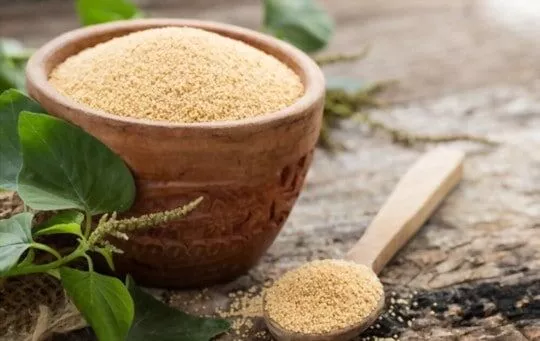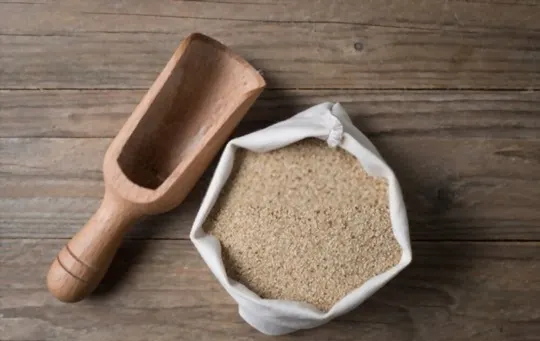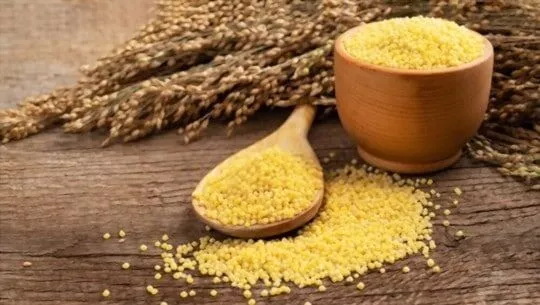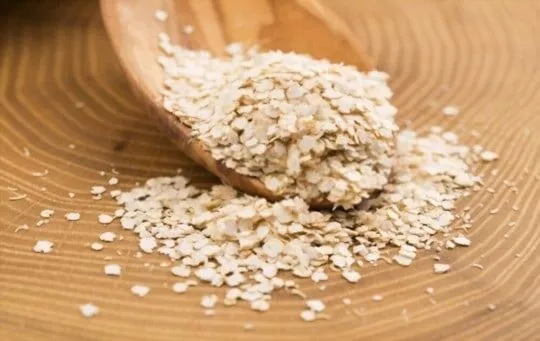Have you ever looked into making a delicious quinoa-based meal, only to be stopped in your tracks by the lack of quinoa flakes available?
Quinoa flakes are among the most popular and nutritious forms of quinoa, offering a wealth of essential vitamins, minerals, and amino acids.
If you’re trying to cut down on the use of processed grains in your kitchen or have run out of your favorite quinoa flakes, don’t worry!
Here are seven great substitutes that can help you achieve the same results without having to resort to highly processed options: oats, amaranth, buckwheat groats, teff flour, and millet.
All these different substitutes can be used for a variety of recipes without any issues arising from them.
So why not give them a try now that you know what they are?
What Are Quinoa Flakes?

Quinoa flakes are simply made from grinding whole grain quinoa into a fine powder.
They offer up a rich source of protein and dietary fiber while providing just enough carbohydrates to give an energy boost.
Quinoa flakes also contain all nine essential amino acids – making them an excellent choice for vegetarians and vegans looking to incorporate more plant-based proteins into their diets.
Quinoa flakes are incredibly versatile too – they can be used in baking as part of gluten-free flours or added oatmeal for extra flavor and texture.
They can even be cooked up on their own as a hot cereal or added to salads as croutons.
The 7 Best Substitutes For Quinoa Flakes
If you’re looking for healthier cooking choices than using processed grains such as wheat flour or corn starch, then consider substituting quinoa flakes for some other natural options.
Here are seven alternatives that will offer either similar or better nutritional value than traditional quinoa flakes:
1 – Oats

Oats have long been considered one of the healthiest foods out there, boasting ample amounts of high-quality carbohydrate sources along with plenty of dietary fiber and protein.
Also known as oat groats, oats break down slowly over time when digested due to their high content of beta-glucan fibers.
When ground up into small pieces or even powdered form like quinoa flakes, oats provide an excellent alternative for baking cakes and breads without compromising on taste or texture.
Any recipe that calls for quinoa flakes can easily be substituted with ground oats instead; however, keep in mind that oats absorb liquid much better than quinoa does so adjust accordingly if needed!
2 – Amaranth

Amaranth is an ancient grain dating back thousands of years and belonging to the same family as spinach and Swiss chard.
It’s gluten-free with high levels of calcium and iron along with loads of antioxidants making it a great substitute for those who wish to reduce their intake of white flour products but still wants something naturally nutritious in its place.
Moreover, it’s easy to grind amaranth into flour which makes it perfect as an alternative to wheat flour when baking muffins and quick breads – it provides just enough structure and binding power so that your baked goods rise properly yet still stay moist inside!
And if you want something more akin to regular quinoa flakes: simply grind up some amaranth seeds until they become fluffy – voila!
There you have some homemade ‘amaranth flakes’ ready at your disposal!
3 – Buckwheat Groats

Buckwheat groats (or buckwheat kernels) come from the husks removed from buckwheat seeds after being hulled – this makes them slightly less crunchy but still fully packed with nutrients like manganese (which helps maintain bone density), magnesium (which helps regulate blood sugar levels), dietary fiber (good for digestive health), and several B vitamins known to support nerve health functions.
Buckwheat groats also make great breakfast cereals – simply add boiling water over them in a bowl before topping them off with slices of fruits/nuts or anything else you fancy!
As an alternative to replacing regular flour when baking goodies like scones/cookies/pancakes/breads: try grinding some buckwheat groats until they become powdery then add this directly into your recipe mix instead!
4 – Teff Flour

Teff is quickly becoming one of the hottest new grains on today’s market due to its short growing cycle (45 days!) and low environmental impact when compared to other grains such as wheat and rice – plus its gluten-free status means that those suffering from Celiac Disease can reap its benefits too!
Teff is especially rich in calcium and iron and works wonderfully when mixed with other flours such as almond meal/coconut flour etc during the baking processes: just remember though that teff does have a relatively strong flavor so depending on what type of dish you plan on cooking make sure not overdo adding it lest end results become overly ‘earthy’ tasting.
To replace regular quinoa flakes: simply grind down some whole teff kernels until they reach desired consistency!
5 – Millet

Last but not least we have millet – another ancient grain that has recently been touted amongst health food circles due to its impressive mineral contents which include phosphorus/magnesium and zinc helping promote better cognitive function/bone strength whilst also providing natural anti-inflammatory properties alongside cardioprotective capabilities (due specialized fatty acids!).
To substitute conventional wheat-based products: try replacing 1 cup all-purpose flour with ¾ cup millet flour plus ¼ cup almond meal – this will help limit glycemic index ratings whilst ensuring the dish still retains optimal texture!
For those wishing to emulate regular ‘quinoa’ shaped grains: simpy dry roast 1 cup raw millet seeds until golden brown before crushing up finely and then adding directly into the recipe mix.
6 – Rice Flakes
Rice flakes are made by flattening rice grains, similar to how oats are processed to create oatmeal. They have a mild flavor and a light, crispy texture that works well in a variety of recipes.
Rice flakes are also gluten-free and contain essential nutrients such as iron, magnesium, and vitamin B6. They can be used as a substitute for quinoa flakes in recipes such as granola bars, cookies, and cakes.
7 – Coconut Flakes

Coconut flakes are a versatile ingredient that can be used as a substitute for quinoa flakes in recipes such as breakfast bowls, granola, and baked goods. They are high in fiber and healthy fats, making them a great option for those looking to add more plant-based nutrients to their diet.
Coconut flakes are also naturally sweet, adding a delicious flavor to any dish they are used in. To substitute for quinoa flakes, simply pulse coconut flakes in a food processor until they reach a similar consistency.

The 7 Best Substitutes for Quinoa Flakes
Ingredients
- Oats
- Amaranth
- Buckwheat Groats
- Teff Flour
- Millet
- Rice Flakes
- Coconut Flakes
Instructions
- Pick your favorite substitute from the list above.
- Follow cooking directions for your selected substitute with the proper ratio of ingredients.
Jenny has always been passionate about cooking, and she uses her platform to share her joy of food with others. Her recipes are easy to follow, and she loves giving tips and tricks to help others create their own unique culinary creations.

